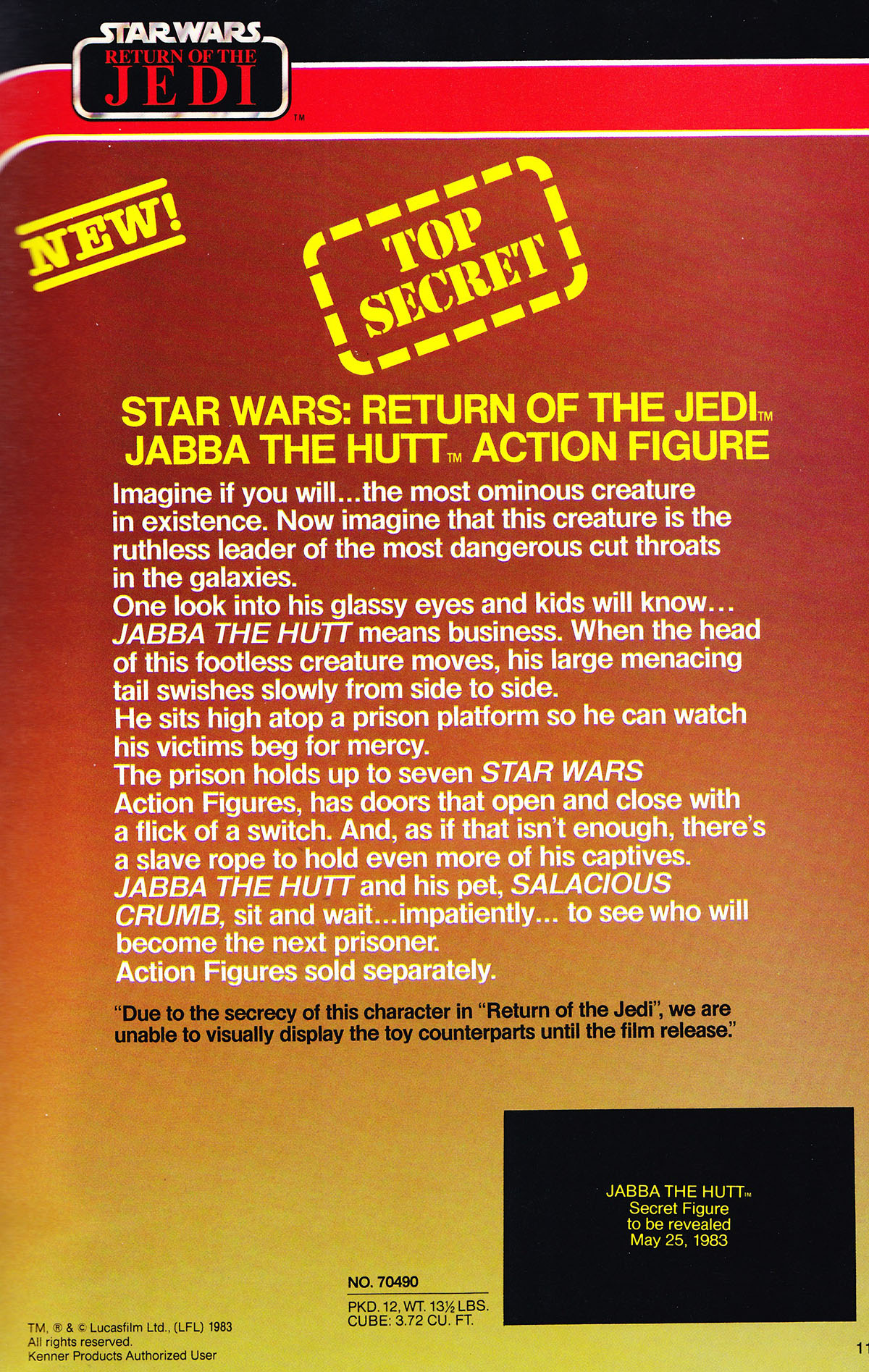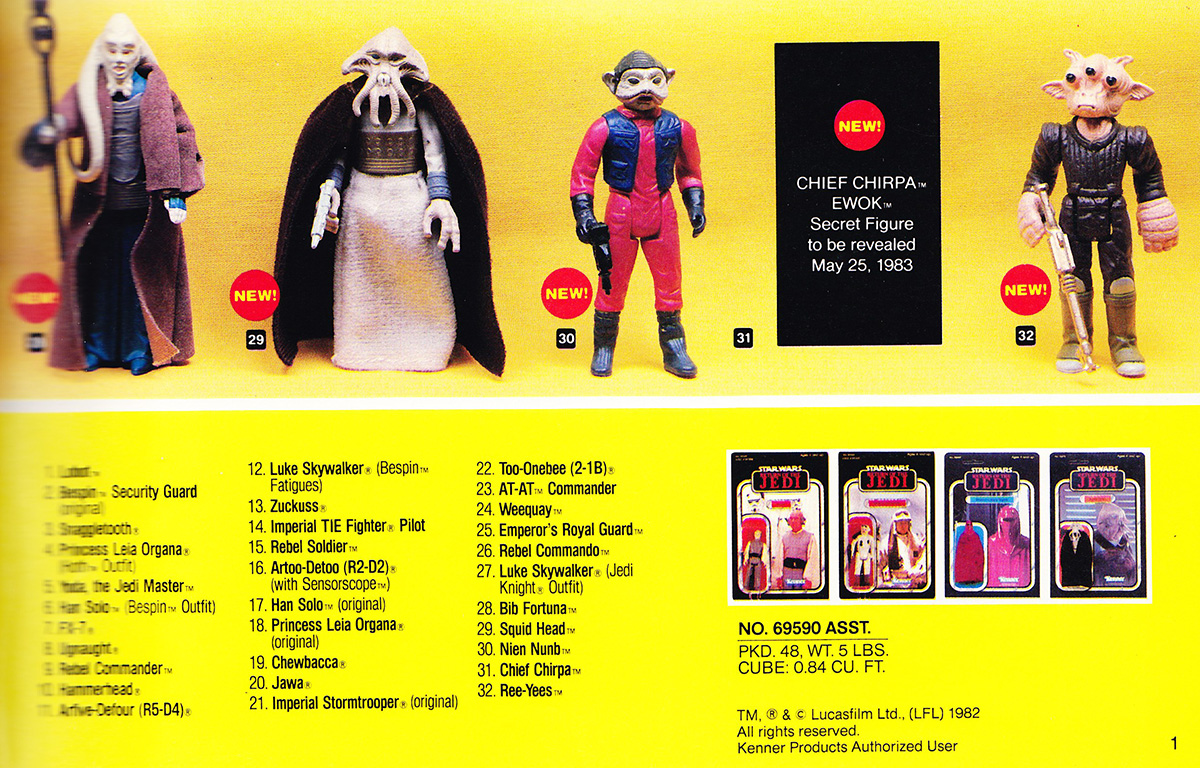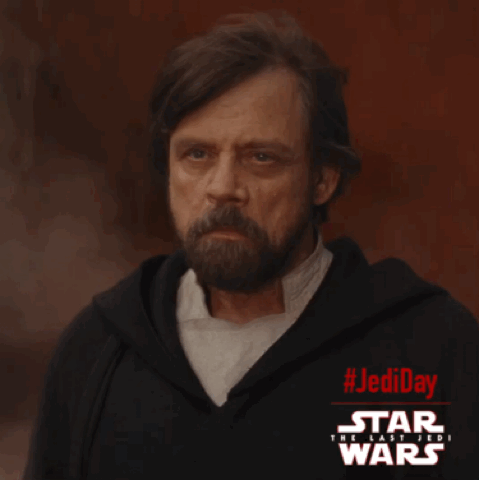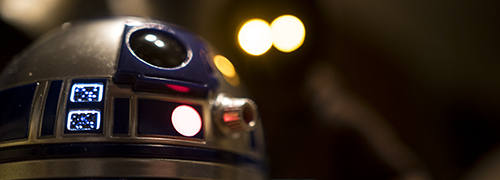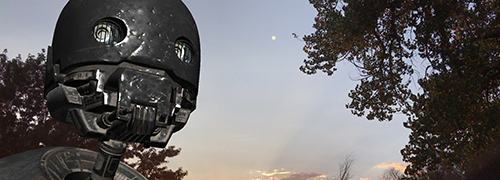Movies

New Releases • A-D • E-H • I-P • Q-Z • Articles • Festivals • Interviews • Dark Knight • Indiana Jones • John Wick • MCU
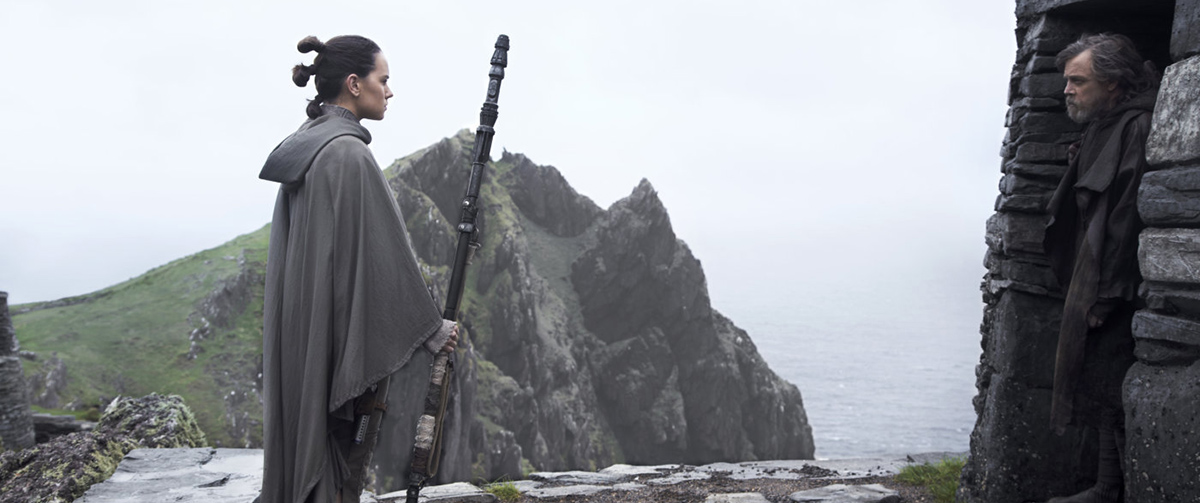
Rey (Daisy Ridley) confronts Luke Skywalker (Mark Hamill)
Photo: Lucasfilm Ltd.
Star Wars: From Mystique to Commodity (in 12 Parsecs)
Originally published 31 January 2018
Updated 24 May 2020
#BrandManagement • #ThoughtLeadership • #StarWars • #Disney • #FranchiseFatigue • #BoxOffice
Star Wars: The Last Jedi only earned $1.3 billion at the global box office.
Never mind it was the highest grossing movie of 2017 in the U.S. and overall worldwide. It earned only $1.3 billion.
That's newsworthy to some, including The Wall St. Journal (with the rather alarmist headline, ‘The Last Jedi’ Loses Sales Momentum, Raising Concern for Disney).
It's also "big" news The Last Jedi effectively flopped in China, earning a paltry $41 million (The Force Awakens pulled in $124 million). What's hot in China? Their top-grossing movie in 2017 was Wolf Warrior 2 ($854 million); in the U.S. it squeezed out a meager $2 million. American imports like The Fate of the Furious ($411 million) and Transformers: Age of Extinction ($304 million) dot the Top 10 All-Time in China. No Disney properties (including Pixar, Marvel and Star Wars) are on the list.
What went "wrong," if anything?
I've had many conversations with people who loved Last Jedi. The female empowerment and the plays on the power of legend resonated with many. But I've also had conversations with a few people who pretty much hated it. In my review, I commented on how the movie was to be celebrated for taking risks, particularly following The Force Awakens, which was a terrific installment, but it played like a greatest hits of previous Star Wars episodes. I contend some people will need to see Episode IX in order to put the events of Episode VIII in a more positive perspective.
The Force Awakens got the fans back into it, following a 10-year absence from the big screen. Rogue One was a great standalone adventure that carried a tone different from all the other Star Wars movies. And then Last Jedi took the Skywalker family saga into some stunningly dark territory.
Certainly that mixed reaction among the fanbase (counter to the movie's Certified Fresh 91% rating on Rotten Tomatoes — ignore the dubious Audience Score) contributed to a decline in repeat viewings when compared to the astronomical performance of Force Awakens. But that's only part of the story. Financially, let's put things into some historical perspective, which is rarely done these days in favor of more breathless, sensational click-bait coverage.
- 2015: The Force Awakens — $2.07 billion
- 2016: Rogue One: A Star Wars Story — $1.06 billion
- 2017: The Last Jedi — $1.31 billion
Source: Box Office Mojo
So, within the space of a little more than two years (actually, 25 1/2 months — 110 weeks), the Star Wars franchise has earned nearly $4.5 billion. Not a bad — early — return on Disney's $4.1 billion purchase from George Lucas. And that's not counting all the licensing, even though the mass merchandising also took a hit during the holidays.
As the WSJ article noted, most studios would love to have this problem.
But, okay. Let's say it's bad news. What should Disney do?
They should proceed with caution and remember what made Star Wars so very special to so many people.
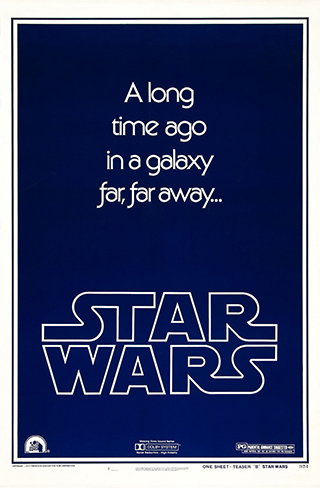
There's a mystique to the Star Wars saga, particularly the original movies (Episodes IV-VI). Think about it. Back then, the first Star Wars played in theatres for more than an entire year (truly the stuff of legend) and enjoyed numerous theatrical re-releases. The next two episodes played for seven or eight months. Since audiences had to wait three years between episodes and home video was still a nascent technology, they savored the theatrical experience. That kind of timeframe and experiential environment alone created anticipation without the hype of social media — in fact, it probably benefited from the lack of a hype machine. Lucas was notoriously secretive, right on down to hiding the reveal of character and spaceship likenesses in Kenner's annual retailer toy catalogs. They were "top secret" and no photos were shown. And, by the way, Star Wars revolutionized the whole concept of movie marketing and merchandising. It became a machine of unprecedented scale.
At the time, while the typical blockbuster made its way to home video within a year or so of its theatrical release, Lucas withheld Episode IV from home video formats for years. That also built up anticipation for the chance to finally watch Star Wars at home.
Times have changed.
Now, there's May the Fourth (playing off "May the Force be with you" on May 4) as a promotional day akin to other faux holidays; it's like Valentine's Day for geeks. (But, granted, less stressful than Cupid's special day.)
And in September, there's Force Friday, in which a global launch of new Star Wars merchandise floods the marketplace — nearly four months ahead of the next Star Wars movie.
In this modern timeline, the movie's released in December, earns $1 billion + and then makes its debut on home video in April.
Repeat the rhythm: May, September, December, April.
In this vicious cycle, there's no time to absorb, appreciate, then anticipate (and save money for more Star Wars swag).
It's only going to get worse as Star Wars is essentially turned into a disposable commodity.
This year, the cycle's switched up, with a new standalone release coming in May — only five months after Episode VIII — followed by Episode IX in December 2019.
That standalone release is mired in controversy. It's about Han Solo's pre-Skywalker adventures, with a young Han Solo played by Alden Ehrenreich (Hail, Caesar!). The original co-directors, Phil Lord and Chris Miller (The Lego Movie), were fired with only three weeks left in principal photography. Ron Howard (Rush, In the Heart of the Sea) came in to save finish the project. Well, wait. There are reports Howard reshot 80% of the movie, so maybe he really did save it.
Anyway, the movie got slapped with a remarkably lame and unimaginative title: Solo: A Star Wars Story. But there is a sliver of hope: The screenplay's by revered Star Wars alumnus Lawrence Kasdan, co-screenwriter of The Empire Strikes Back and The Force Awakens.
Solo should have Disney a little nervous. And hopefully it's making them reevaluate the pacing of the Star Wars franchise. There's talk of standalone movies for Obi-Wan Kenobi, Yoda, Boba Fett — any character's up for theatrical exploitation.
Also, Rian Johnson, director of The Last Jedi, is moving forward with creating a whole new Star Wars trilogy. Plus, David Benioff and D.B. Weiss, the creative force (sorry) behind the Game of Thrones HBO empire (sorry, again) are creating yet another Star Wars saga — unrelated to the Skywalker family and Johnson's storyline. Wow. And that's only the big screen expansion of the universe. There's also a live-action TV series in development Hell, along with on-going animated fare on the small screen.
It's a different world and Disney needs to perform a careful balancing act. There's a need to blend the mythos of the Star Wars past with the reality of the instant gratification, social media-driven society of today.
Update: 24 May 2020
Okay. I recently put my thoughts together about Episode IX: The Rise of Skywalker. I wasn't happy with the conclusion of the Skywalker saga. A big whiff.
Let's look at some additional box office tallies:
- 2018: Solo: A Star Wars Story — $393 million
- 2019: The Rise of Skywalker — $1.07 billion
Source: Box Office Mojo
Solo missed the mark commercially; it was the lowest-grossing live action Star Wars feature release to date (adjusting for inflation). And it did indeed make Disney reevaluate the overall strategy. All of those spin-off movies have been benched indefinitely. Plus, there's been a revolving door of talent attempting to establish a whole new saga. Even the creatives behind HBO's Game of Thrones decided to walk away.
With Episode IX being a creative disappointment (a mess, actually) and even less popular than Episode VIII at the box office, the one bright spot has been The Mandalorian, a streaming series on Disney+. The Child has recaptured the Star Wars magic and Jon Favreau and Dave Filoni have proven to be worthy stewards of the franchise.

Finally, there is a new hope.
How did they do it? Well, in part, they went back to the Lucas playbook. They kept The Child a total secret. Even licensing was prohibited; nobody was able to hawk Child toys and T's when the series launched and it wasn't until April when Build-A-Bear released its version. Guess what? It sold out in record time. And, when sales resumed a couple weeks later, it sold out again.
If only Disney would go back to Lucas' plans for the third Skywalker trilogy and do it right.
A recent visit to the Mattsonian Archives surfaced some gems by way of the 1983 Kenner catalog for retailers. In some respects, Favreau & Co. outdid Lucas by not even revealing any details to licensees prior to the launch of The Mandalorian series. That secrecy is in itself a great marketing tool that does more to build up demand and interest than all the hype surrounding Force Friday events ahead of a major Star Wars movie release.
